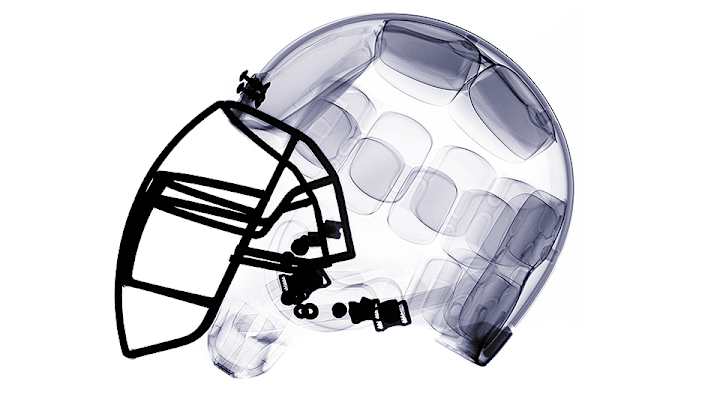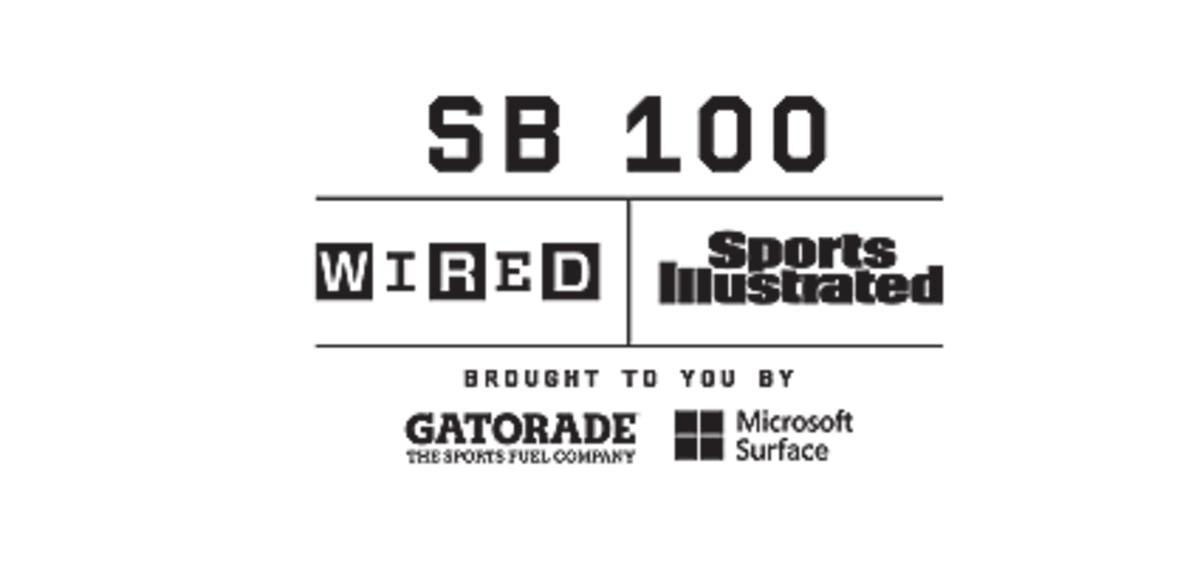How will NFL improve concussion problem over the next 50 years?

If football is going to exist in 50 years, we are going to need to solve the problem of brain trauma. Five high school players have died this year from head injuries. Chronic traumatic encephalopathy, a degenerative brain disease linked to repetitive brain trauma, has so far been found in the brains of more than 100 deceased ex-NFL players. As popular as the NFL might be, this crisis is shaking its foundations. In April, a Harris Poll of 2,012 adult Americans found that 89% believed concussions were a moderate to severe health concern, and 25% would not let their children play some contact sports because of a fear of concussions.
History, though, offers football fans a glimmer of hope. Back in the 1900s, football survived a similar existential crisis. Players were being crushed and were dying from head trauma. On the East Coast, Columbia abolished football and Harvard threatened to do the same. On the West Coast, Berkeley and Stanford switched out football for rugby. But radical changes—including the forward pass—saved the game. And less than two decades later, the NFL was born.
What does future hold for football? A look ahead to Super Bowl 100
So can today's league solve the concussion problem? Not exactly, says Alvaro Pascual-Leone, a professor of neurology at Harvard Medical School, and associate director of Harvard’s Football Players Health Study. “Concussions have been around for a long time, since the stone age probably,” he says. “There’s nothing new about concussions.” The injury is a natural consequence of impact, and as long as football remains a contact sport, players will still suffer concussions.
However, there are things that can be done to reduce the frequency of concussions, particularly limiting exposure. That could include banning plays that routinely put players at greater risk of head injury, or eliminating contact in practice. A game situation is always going to be higher risk than training, but as Bill Meehan, director of the Micheli Center for Sports Injury Prevention and associate director of the football health study says, “I don’t have to practice hitting my head against a wall.”
According to Meehan, better enforcement of existing rules would help, too. “There is a rule in the books that a referee can throw somebody out of the game [for illegal hits],” he says. “Now I’ve been watching football my whole life, I’ve never seen someone thrown out of the game. Rugby, soccer, ice hockey, I see it all the time.”
Look for new entries in the Super Bowl 100 series, presented by Gatorade and Microsoft Surface, at SI.com/SB100 and Wired.com/SB100
Chapter 1, Oct. 7 TRAINING
Chapter 2, Oct. 28 EQUIPMENT
Chapter 3, Nov. 18 STADIUMS
Chapter 4, Dec. 9 CONCUSSIONS
Chapter 5, Dec. 16 MEDIA
Chapter 6, Dec. 30 VR
Chapter 7, Jan. 6 NFL IN SOCIETY
Chapter 8, Jan. 13 TRACKING
Chapter 9, Jan. 20 STRATEGY
Chapter 10, Jan. 27 SB 100
ROAD MAP TO
THE FUTURE
Perhaps, says Uzma Samadani, an associate professor of neurosurgery at the University of Minnesota, we also might need to consider radical rule changes. “These players are getting bigger and stronger, bigger and stronger, year after year, and at some point it’s going to reach the point where they’re capable of killing each other,” she says. Samadani works as a neurotrauma consultant for the NFL and was on the sidelines in Minnesota this season when Chiefs wide receiver Jeremy Maclin suffered a concussion. As Vikings cornerback Captain Munnerlyn wrapped up the Kansas City player, Maclin’s helmet took the brunt of the force of their combined weight of 382 pounds hitting the turf. Limiting maximum player weight, Samadani argues, might be a simple, if extreme, way to reduce impact forces.
Micky Collins, director of the University of Pittsburgh Medical Center Sports Medicine Concussion Program, disagrees. “I just think we need more science before we do that,” he says. Collins explains that there is the danger that making major changes based on incomplete information might have serious and unintended consequences. Take, for example, pitch counts and ulnar collateral ligament injuries in baseball. Pitch counts were introduced to reduce wear and tear on pitchers, but whether or not they actually do that remains controversial.
While we are learning more about concussions with each passing year, we still don’t know enough, and the hype surrounding concussions might be leading us to draw flawed conclusions. Two decades ago, “you knew about concussions. It was something you got dizzy from, and that was it,” says Max Lane, an offensive tackle who played seven seasons with the Patriots from 1994 to ’00. “And now, knowing everything, it is scary for the future.” Lane never had a diagnosed concussion, but is unsure of the long-term effects of the blows he did receive. Linebacker Isaiah Kacyvenski was drafted by the Seahawks out of Harvard in 2000 and played seven years in the NFL before returning to his alma mater for business school. “So I had this before and after snapshot around the ability to be able to think through complex solutions,” Kacyvenski says. “I’d be lying to you if I was to say there was not a difference before and after.”
Concussion expert Dr. Bennet Omalu says children should not play football
Cognitive problems can have many causes, but “if you were in the NFL, automatically you attribute that to being in the NFL,” Meehan says. Niners rising star Chris Borland was the most public casualty of the paranoia around head trauma. The linebacker quit football earlier this year, citing fears over the consequences of repetitive head impact.
The most dangerous conclusion could be questioning the use of the helmet. While football’s most iconic piece of protective gear might actually be to blame for increasing the incidence of concussions, as it converts focal, skull-fracturing hits into diffused, brain-rattling ones, it has also almost certainly saved lives. But more than that, the helmet offers solutions to football that rugby, in comparison, doesn’t have. First, improvements in helmet construction, including padding that hardens on impact and honeycomb structures only possible through 3D printing, may help absorb forces. Second, the helmet provides a perfect way to wrap each player’s brain in sensors such as accelerometers, and to track exactly what happens during a game. “Perhaps we’ll even have EEG [a test that measures brain wave patterns] built in,” Samadani says, “so you can do quantitative EEG in real time and know when you have dysfunction immediately.” Or maybe they'll even be able to monitor how the brain actually moves within the skull using a system that shines near-infrared light through a player’s head. That's currently being developed by Gary Strangman, an associate professor of psychiatry at Harvard Medical School.
With all of those sensors, in 50 years time, “we’ll have a completely different way to diagnose [concussions],” Samadani says. “Concussions will be like a heart attack.”
Envisioning the stadium of the future
Perhaps that analogy extends beyond detection. Hearts can be restarted with electrical shocks, and far less powerful electrical pulses could be used as a way to help regulate and reset an injured brain. Exercise benefits those with heart disease and can speed up recovery, and mental exercises can help a brain recover from a concussion. And drugs could play a crucial role in both, too. Kun Ping Lu, a professor of medicine at Beth Israel Deaconess Medical Center, and his wife, Xiao Zhen Zhou, an associate professor of medicine, are researching an antibody that binds to cis phosphorylated tau protein. In studies on mice, they have shown that the concentration of this protein rises significantly after head impact, and that it may be responsible for developing CTE-like pathologies.
This antibody could be used to detect cis P-tau in a blood test, helping to diagnose a concussion, and even to clear the protein from an injured player’s body. “There will come some [sideline] therapy in the next 5-10 years,” Lu says. “People take a medicine and at least stop some damage, prevent some long-term consequences.”
But if a concussion does become comparable to a heart attack, then by Super Bowl 100, could we perhaps be able to transplant irreparable brains, copying across the computer program that is you? Unfortunately not, says David Putrino, an assistant professor at Weil Cornell Medical College, and director of telemedicine and virtual rehabilitation at the Burke Rehabilitation Center. “These highly ambitious brain mapping projects, I think they’re extremely important,” Putrino says, “but we have mapped every single neuron, every single connection, every single thing that we can know about a brain, in a C. elegens worm, but we still can’t predict the way the connections are going to work and how it does what it does. We still don’t know how it’s being it.” Fifty years is just too soon for science fiction.

